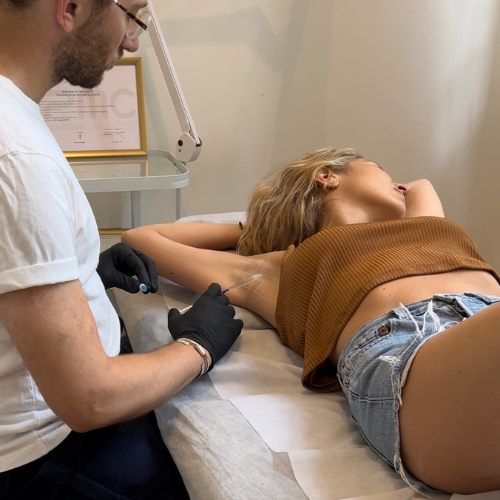Transpiration Excessive
En tant que plus grand organe du corps, la peau joue un rôle essentiel dans la protection contre les agressions extérieures et dans la régulation de divers processus physiologiques. La peau est également un reflet de notre santé globale, de notre mode de vie et de notre bien-être émotionnel.
Prendre soin de notre peau est donc crucial pour maintenir sa santé et son apparence. Cela comprend l’adoption d’une routine de soins de la peau adaptée à nos besoins individuels, la protection contre les dommages causés par le soleil et les éléments extérieurs, une alimentation équilibrée et une hydratation adéquate, ainsi que la gestion du stress et du mode de vie.
En investissant dans des habitudes de soins de la peau saines et en consultant des professionnels de la santé lorsque cela est nécessaire, nous pouvons aider à préserver la jeunesse et l’éclat de notre peau, tout en favorisant notre bien-être général.
La transpiration excessive, médicalement connue sous le nom d’hyperhidrose, est une condition caractérisée par une sudation excessive et incontrôlable, qui peut affecter différentes parties du corps telles que les aisselles, les paumes des mains, les plantes des pieds, le visage ou d’autres zones. Cette condition peut avoir un impact significatif sur la qualité de vie et l’estime de soi des personnes qui en souffrent, et peut interférer avec les activités quotidiennes.
L’hyperhidrose peut être classée en deux types principaux :
- Hyperhidrose primaire : Également appelée hyperhidrose idiopathique, elle se manifeste sans cause apparente et est généralement liée à une suractivation du système nerveux sympathique, qui contrôle la sudation. Elle peut être héréditaire et se déclencher dès l’enfance ou à l’adolescence. Cette forme d’hyperhidrose affecte généralement les aisselles, les paumes des mains, les plantes des pieds et le visage.
- Hyperhidrose secondaire : Celle-ci est généralement causée par une condition médicale sous-jacente, telle que l’hyperthyroïdie, la ménopause, le diabète, certaines infections, des médicaments ou des substances toxiques. Elle peut survenir à tout âge et peut affecter d’autres parties du corps en plus des aisselles, des mains et des pieds.


